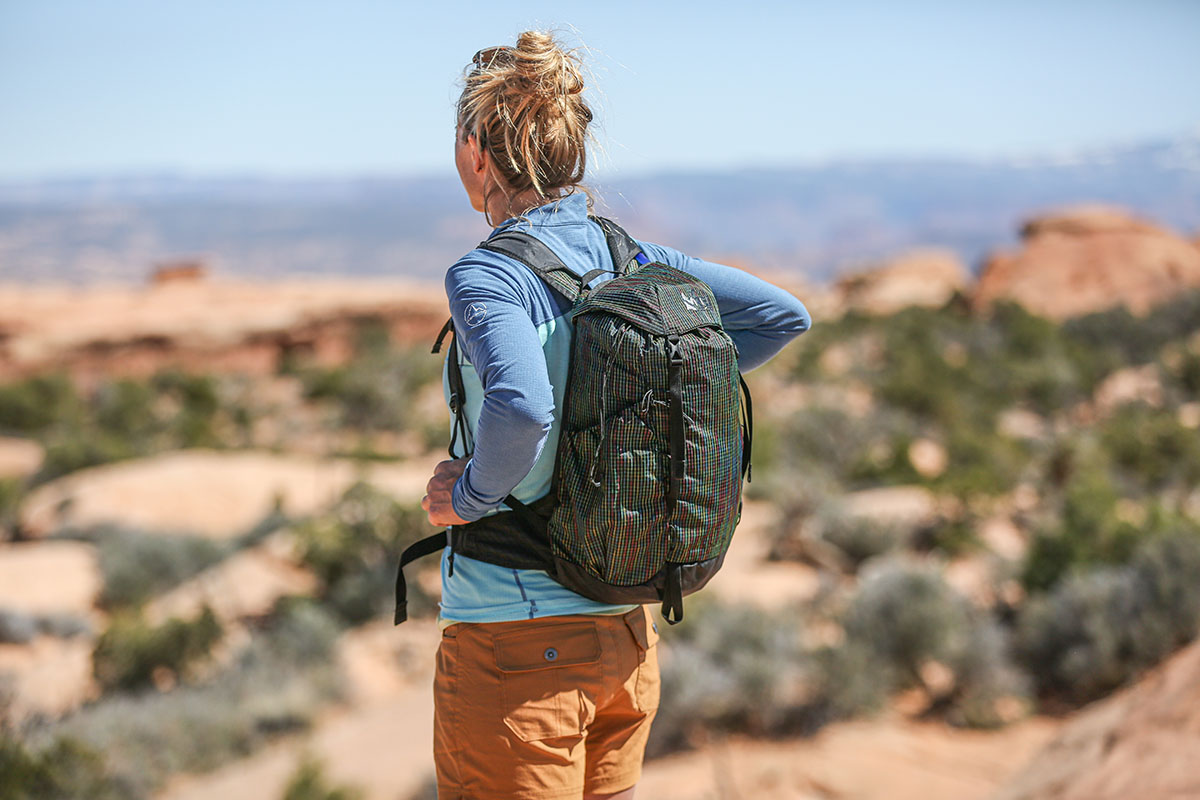
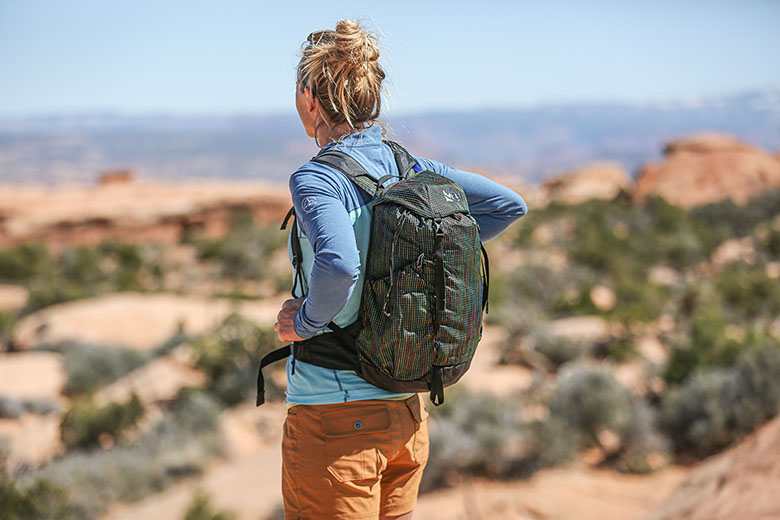
Price: $60
Weight: 14.0 oz.
Capacities: 18, 22L
What we like: Surprisingly versatile considering the affordable, lightweight build.
What we don’t: Made with relatively thin nylon and only comes in one size.
See the REI Co-op Flash 22
When it comes to outdoor gear, we often find ourselves forced to make decisions between weight savings and functionality. Ultralight gear is great for moving quickly, but it usually comes with significant trade-offs in terms of comfort and durability. REI’s Flash 22 daypack is a bit of an exception to this rule, pairing a competitively low weight and price with a highly practical design that’s great for lightweight day hikes, travel, and everyday use. Below we break down the details of the Flash 22. To see how it stacks up to the competition, check out our articles on the best daypacks and best women’s daypacks.
Editor’s note: We updated this review on April 16, 2025, to reflect our experiences with the latest Flash 22. In addition to an improved storage layout and lid design, REI also upped the sustainability focus with the latest pack, which is always a welcome improvement.
Featuring a lightly padded backpanel and shoulder straps in addition to a webbing hipbelt and sternum strap, the REI Co-op Flash 22 hits a nice balance of minimalism and carrying comfort. For reference, we’ve stuffed the Flash 22 to the brim on countless day hikes and climbing approaches with layers, food, water, and miscellaneous climbing accessories in tow, and each time, we’ve come away impressed by the pack’s ability to carry the load. There’s a good amount of backpanel padding thanks to the foam framesheet and cushioned mesh panels, keeping the back protected from sharp objects like cams and nut tools. Multiple members on our team have carried this pack while climbing, too, and have found it to be a surprisingly capable and low-profile companion. All in all, it’s a really nice balance between simplicity and function.
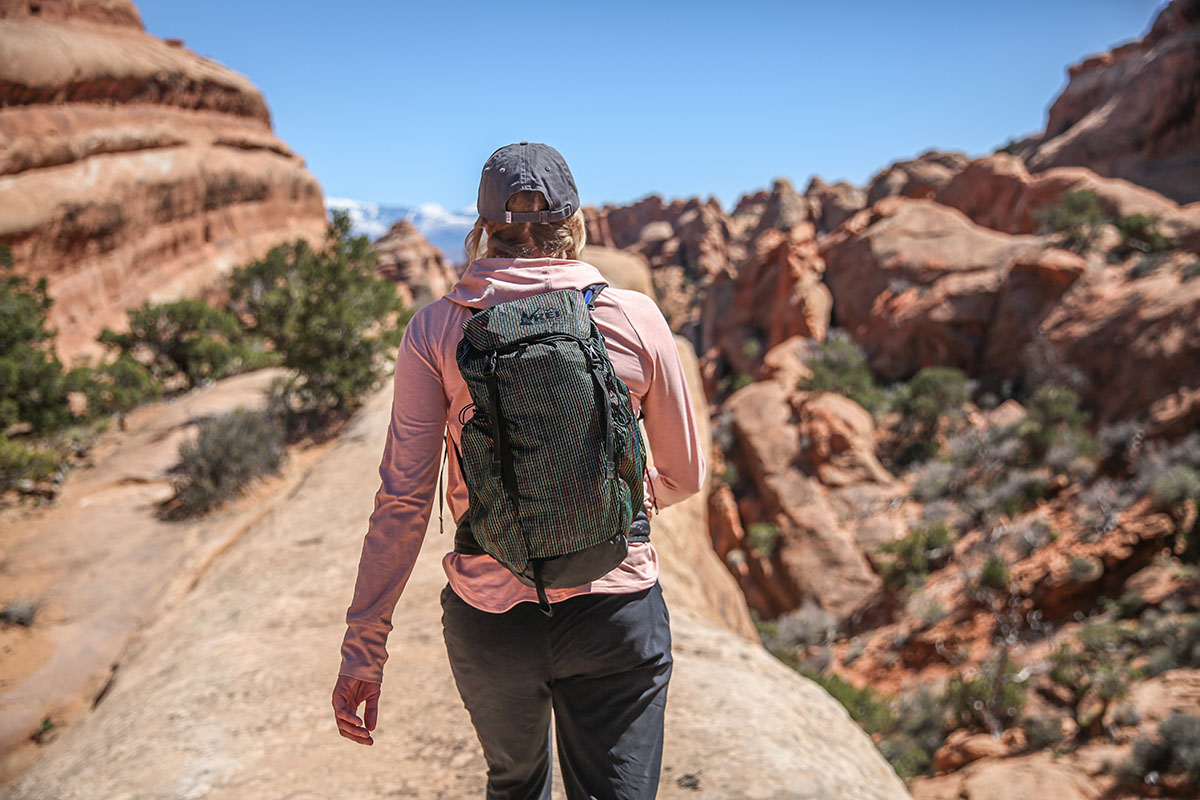
With 22 liters of capacity, the Flash 22 is an ideal day hiking pack for lightweight loads. The emphasis on “lightweight” is important: While REI doesn’t state a maximum load range for the latest version of the pack, the past-generation design could handle up to 12 pounds, and we’d estimate that the newest model is about the same. You can carry a lot with 12 pounds—food, water, and layers for a day on the trail; a laptop, books, and gym clothes; a harness, belay device, and climbing shoes—but you’ll want to be careful not to max out such a minimalist pack. For heavier loads, it's worth upgrading to a more supportive—albeit heavier and pricier—design like the Osprey Talon 22.
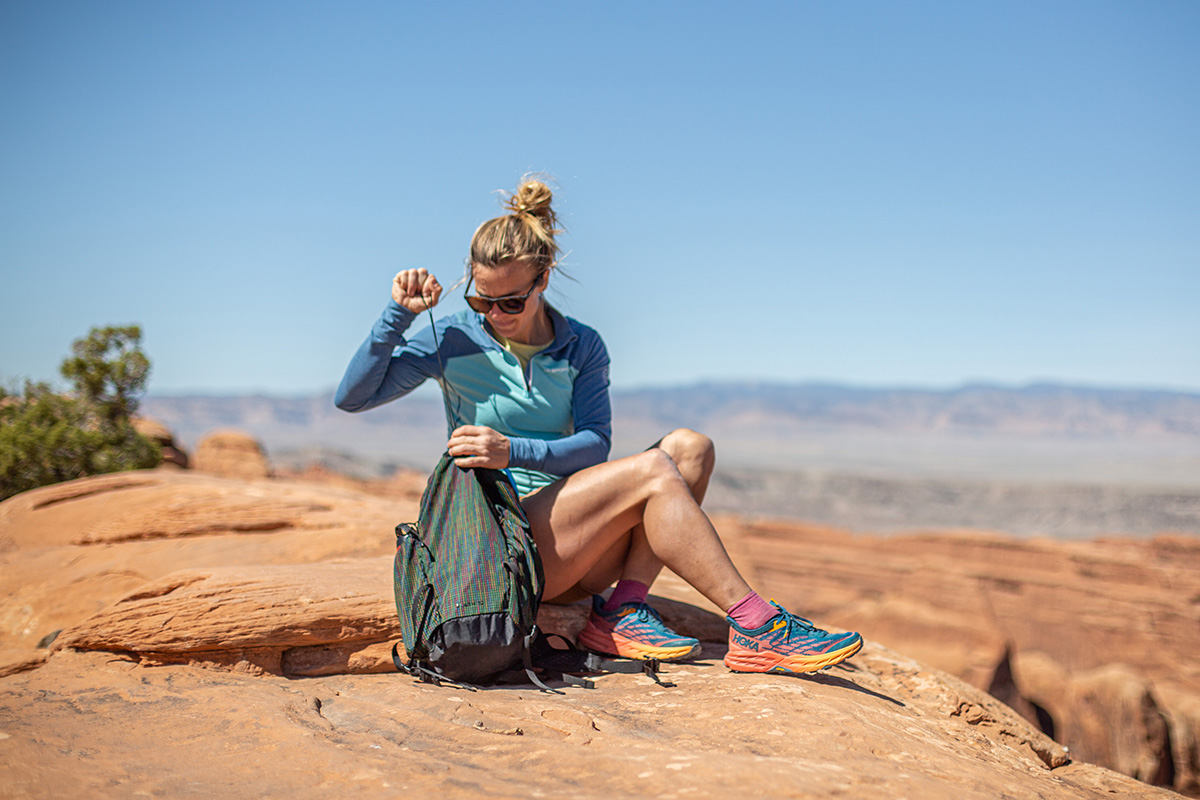
At 14 ounces for the latest version, the Flash 22 fits squarely into the ultralight daypack category. In fact, you’d be hard-pressed to find a lighter pack that can still comfortably handle 22 liters of gear. The Cotopaxi Luzon 24L comes close with a 14.8-ounce build that offers a tad more storage space, but it lacks the padding (on both the shoulder straps and backpanel) of the Flash 22, so we wouldn't recommend stuffing it to the gills. Most other packs of similar capacity are significantly heavier, such as the Osprey Daylite Plus (1 lb. 4.6 oz.) and Talon 22 (2 lb. 6.1 oz.).
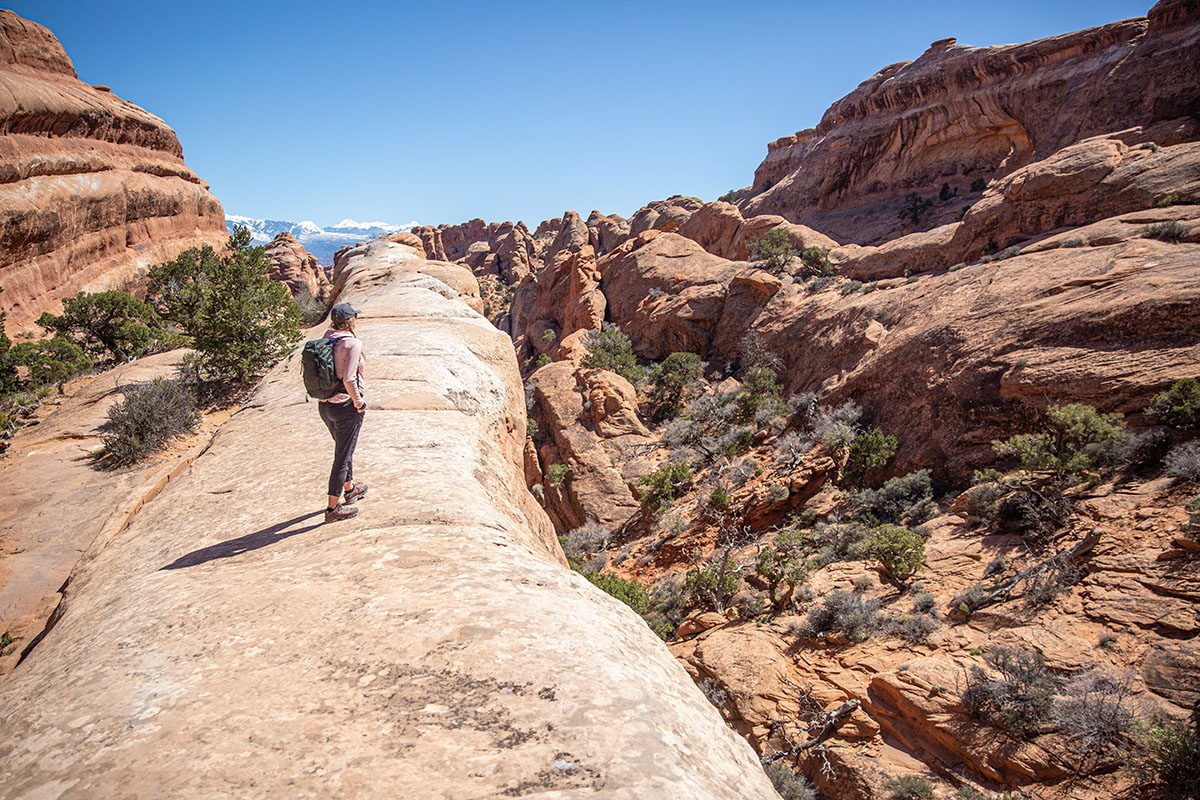
Packability is another area where the Flash 22 shines. Rolled up, the Flash is about the size of a 32-ounce Nalgene bottle, and it can go even smaller if you leave the foam framesheet at home. While not everyone will need such a lightweight and packable design, we think it’s one of the true selling points of the Flash 22: This minimalist build allows you to throw the pack in for the ride (into your travel duffel or backpacking pack, for example), when you might be forced to leave bulkier models like the Daylite Plus or Talon behind.
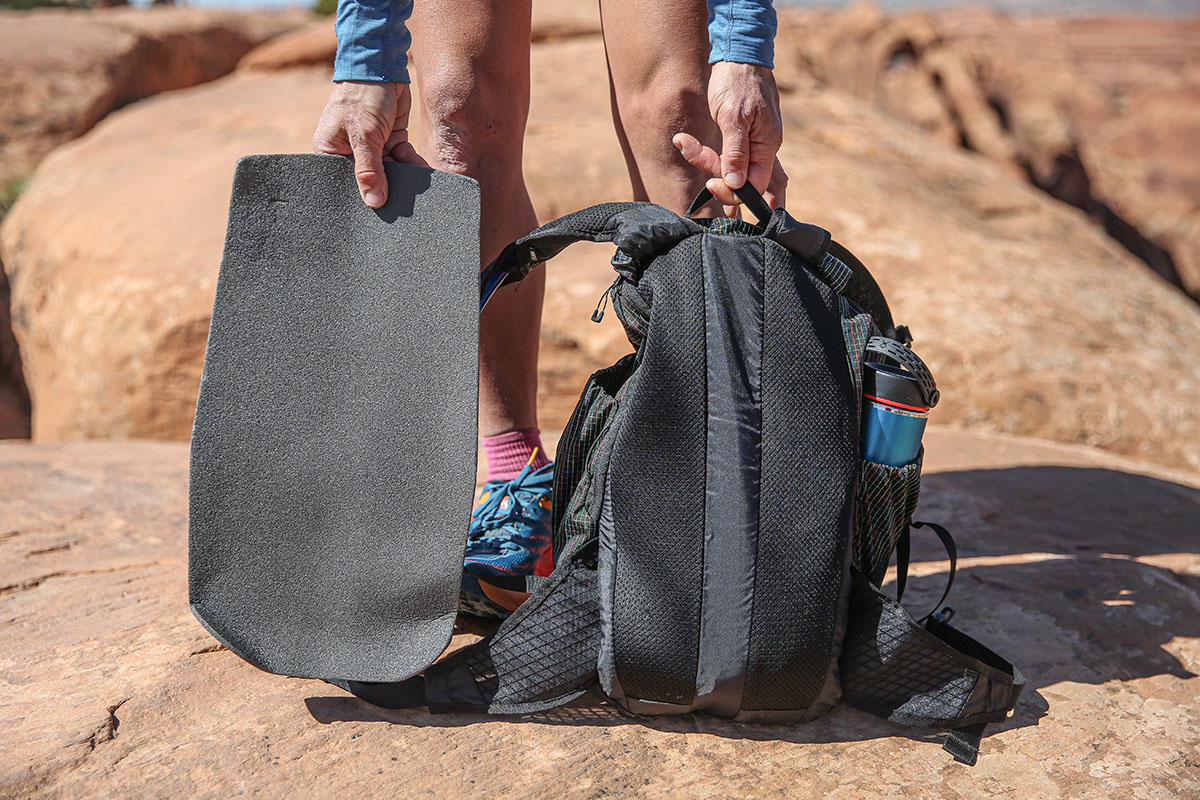
The Flash 22 features padded mesh on both the shoulder straps and across the backpanel for an extra dose of ventilation. Hiking in desert environments like Moab, Utah, and Red Rock Canyon in Nevada, we've been impressed with how the pack keeps air circulating, even on hot and sunny days with long stretches of exposed trail. Compared to the nylon backpanel of designs like the Flash 18 or Cotopaxi Luzon, the difference is significant: Not only does the airy mesh allow room for air to flow, but it also feels soft when wet, whereas nylon becomes clammy and slippery. Again, the Flash 22 stands out in its weight class as being fairly well ventilated—you’ll have to bump up to 1-pound-plus packs like the Osprey Daylite Plus or Gregory Nano 22 H2O for similar amounts of breathability.
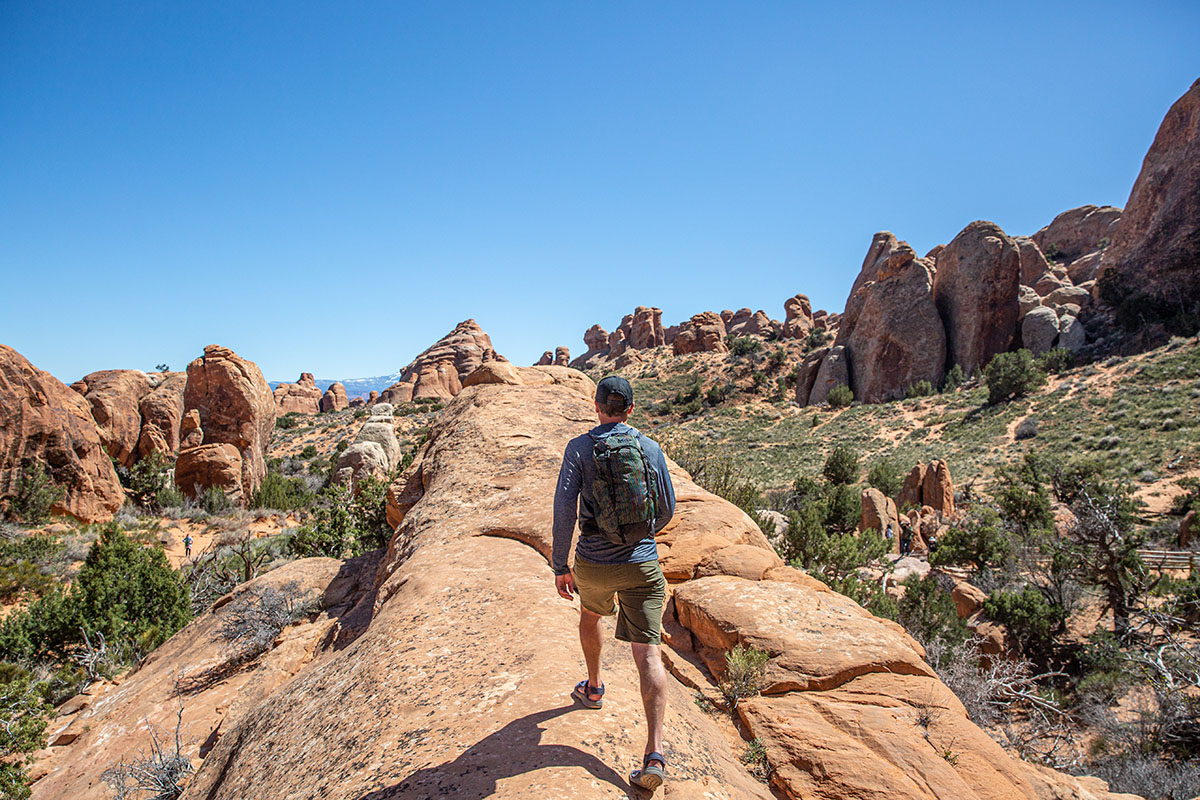
Like most hiking and travel daypacks, the REI Co-op Flash 22 is not waterproof. Its ripstop nylon fabric has a durable water-repellent (DWR) coating and is able to slough off light rain or snow, but expect it to soak through during a sustained rain shower. All told, if you plan to venture out in inclement conditions, we recommend you place your valuables in plastic Ziplocs, trash bags, or a dry bag before putting them inside the Flash 22. Alternatively, if you prefer exterior protection, REI makes the Duck’s Back Rain Cover, which cinches around the pack for waterproof protection and will run you an extra 3 ounces and $28 (XS size).
The REI Co-op Flash 22 has a good number of options for both internal and external storage, especially considering its very low weight. A cavernous main compartment cinches closed with a quick-pull drawcord, and inside are a key clip and two deep pockets along the backpanel (they’re a good size for smaller items like sunglasses or bars). Rounding out the interior is a hydration sleeve that fits a water bladder up to 3 liters in size, along with a reservoir loop, exit port, and hose sleeves on either shoulder strap. On the outside are two zippered pockets—one small storage area on the lid perfect for valuables and a large zippered sleeve that extends the entire length and width of the front panel. Finally, you get extra-deep dump pockets on either side that stretch to accommodate items like a water bottle (a 32-oz. Nalgene fits great) or lightweight windbreaker.
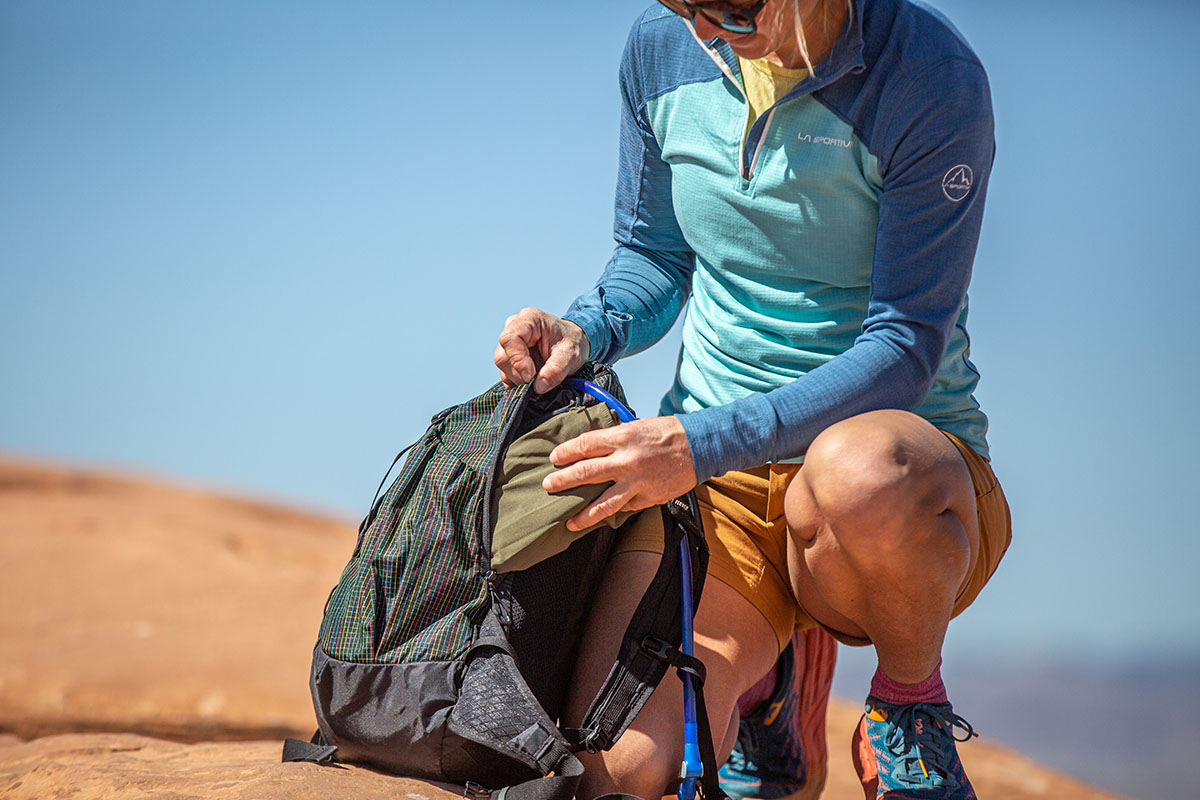
REI has also packed an impressive amount of external attachment points on the Flash 22, ranging from a stowable ice axe loop with top attachment (the top bungee is conspicuously missing on the Flash 18) to daisy chains on each side and lash points for compression straps at the top and bottom. All in all, it’s a fairly impressive feature set for such a lightweight build, and we appreciate the additional organization you get from the top lid and side dump pockets (left off the smaller Flash 18).
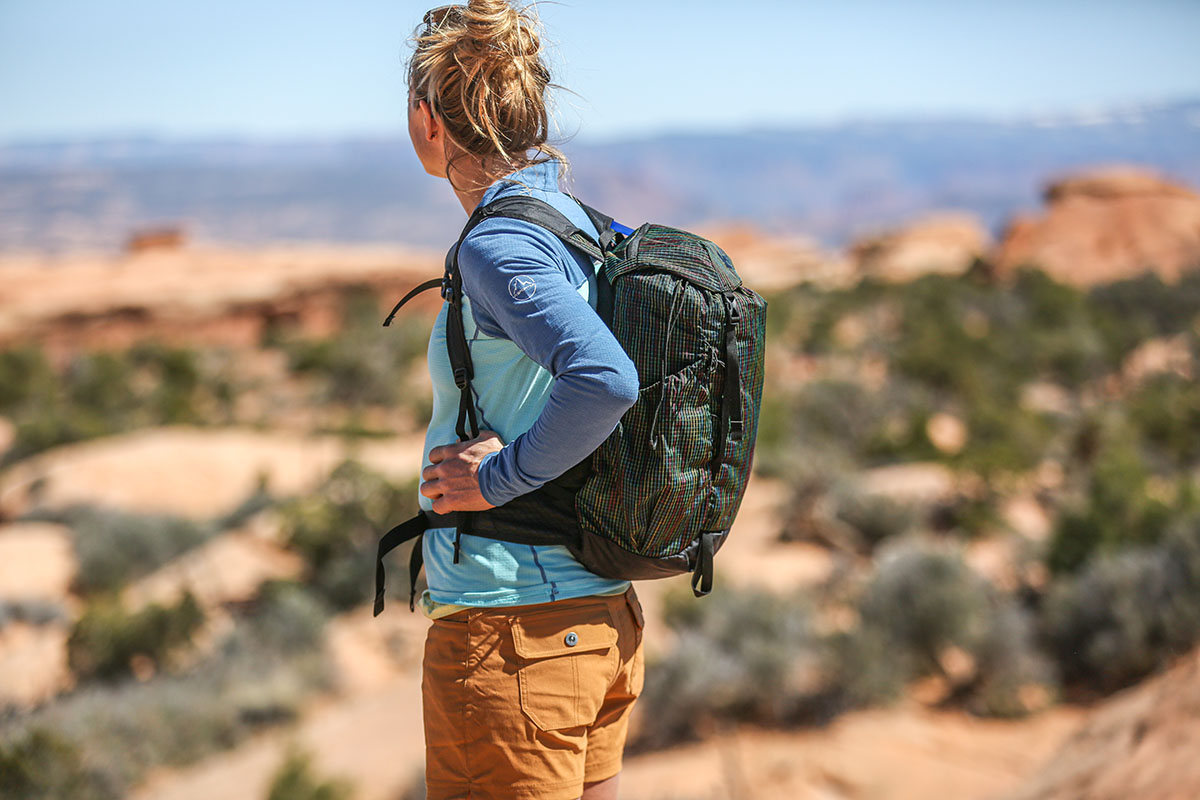
The Flash 22 is built with thin, 70-denier (D) ripstop nylon throughout, which has a relatively delicate feel. For reference, most daypacks start closer to 100D, including the popular Osprey Talon 22, which features a 100D body fabric and 420D base. That said, we’ve dragged the Flash up countless multi-pitch climbs—sometimes having to thrash our way up awkward pitches with the pack dragging against abrasive rock—and it’s held up impressively well to the abuse.
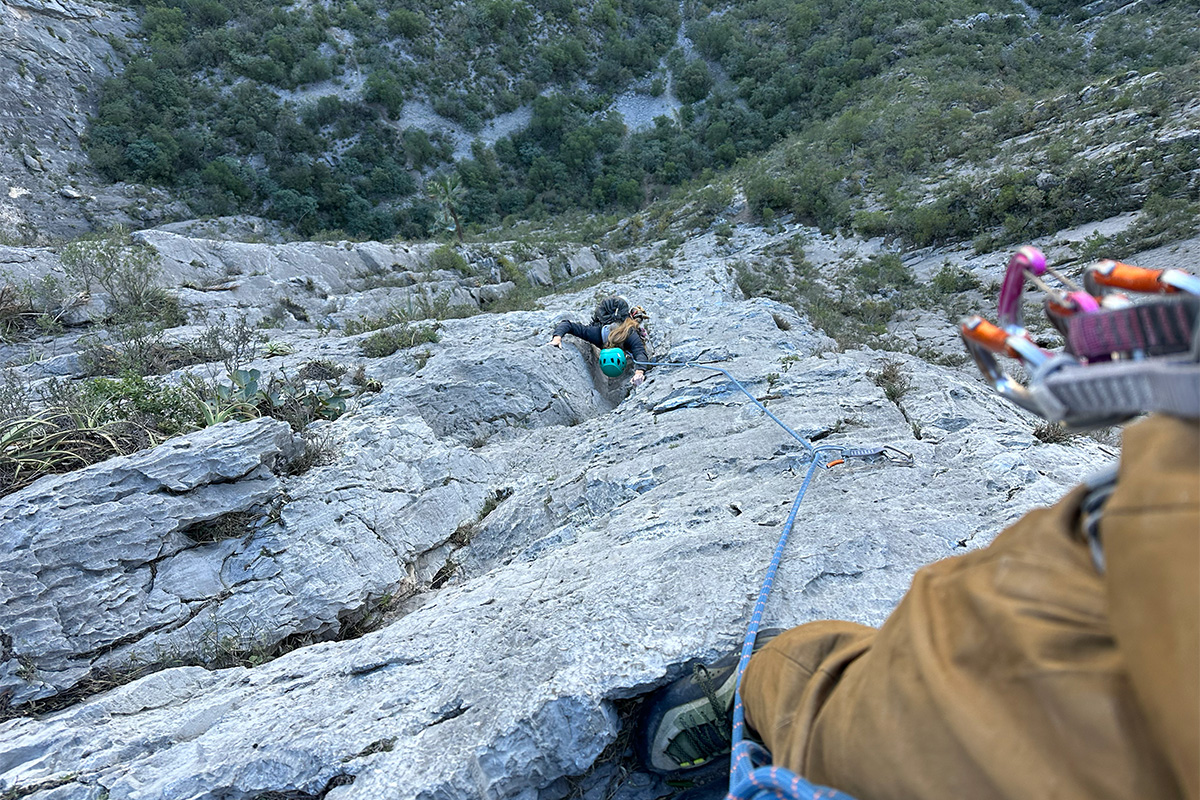
Thin material aside, the REI Co-op Flash 22 is well built with noticeable attention to detail, from the stowaway tool loop at the base to the sleek hydration tube sleeves on each shoulder strap. In addition, all of the buckles, cords, and zippers have worked flawlessly throughout testing, and all signs point to the Flash 22 having a long life (which is significant given its low $60 price tag). One final thing to note: When removing the foam backpanel on the 18-liter version of the Flash, we tore a chunk out of it. Given the similarities between the two designs, it’s a good idea to treat the panel with care if you plan to remove it to cut weight or for use as a sit pad.
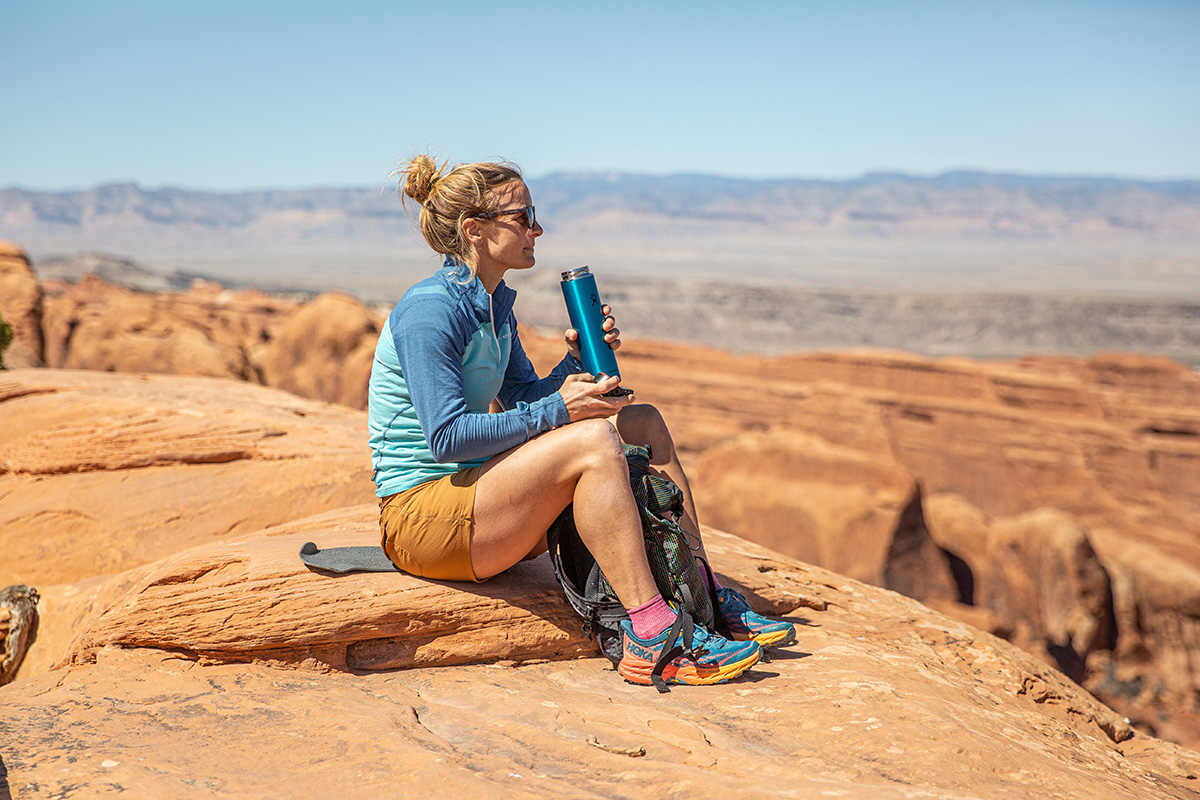
REI Co-op makes their Flash 22 pack in one size only, which fits torso lengths of 16 to 21 inches and a range of hip sizes from 26 to 42 inches. We’ve found the pack to be very accommodating of various body shapes and have even swapped it between Switchback Travel staff members ranging from 5’5” to 6’1”. That said, the one-size-fits-all designation does have its limitations, particularly for those with body shapes and sizes on either end of the spectrum. Most ultralight daypacks come in just one size, but bumping up to more featured designs will get you more options for fit. For example, the Osprey Talon 22 features a torso length adjustment system that can accommodate torsos from 17 to 22 inches in length. It’s also offered in an Extended Fit variation that features a larger hipbelt, extended shoulder straps, repositioned pockets, and a longer sternum strap than the straight-sized model.
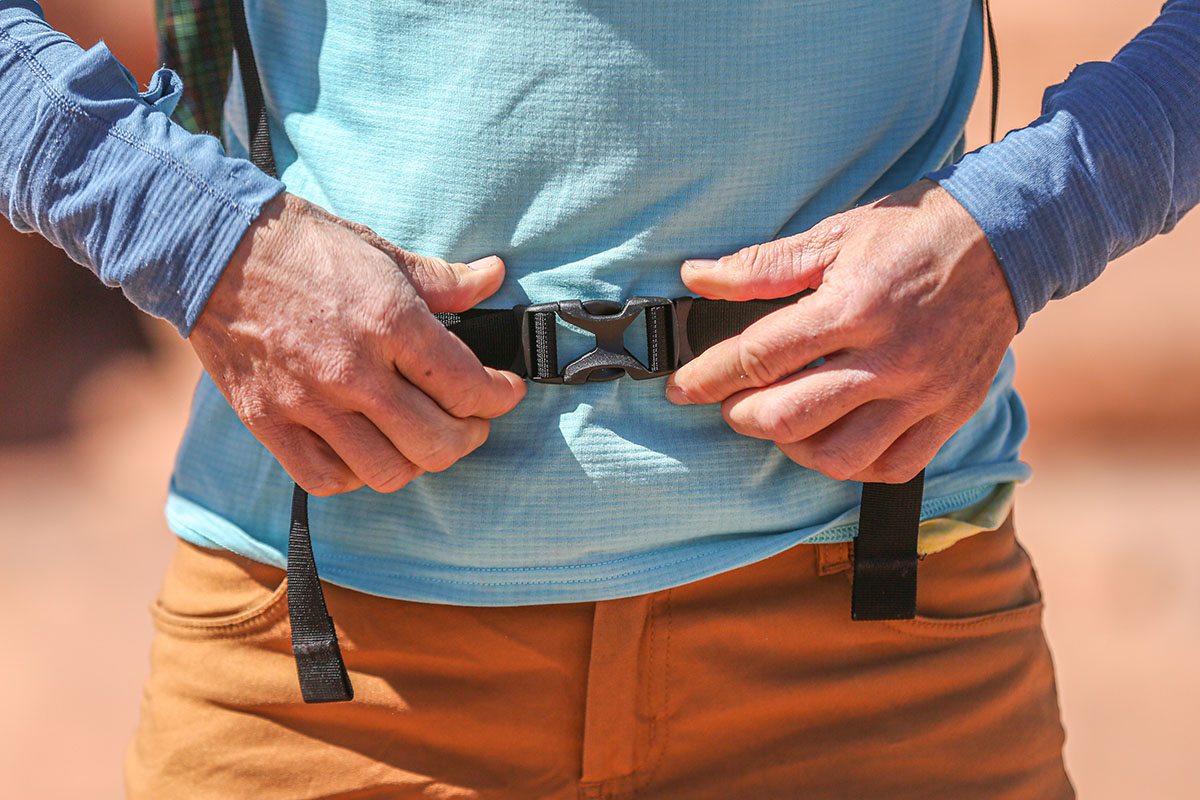
REI Co-op is a leader in the outdoor industry when it comes to sustainability, and the Flash 22 is a nice example. The body of the pack is made with recycled nylon that’s bluesign-approved, meaning it meets strict safety and environmental requirements and has been produced with a focus on minimizing impact. It’s also worth noting that REI is Climate Neutral Certified, which indicates they’re actively working to measure, reduce, and ultimately offset their carbon emissions. The most current version of the Flash 22 also now boats a non-fluorinated DWR coating to help reduce harmful “forever chemicals” in the manufacturing process. Overall, the Flash is another intentionally made design from the co-op.
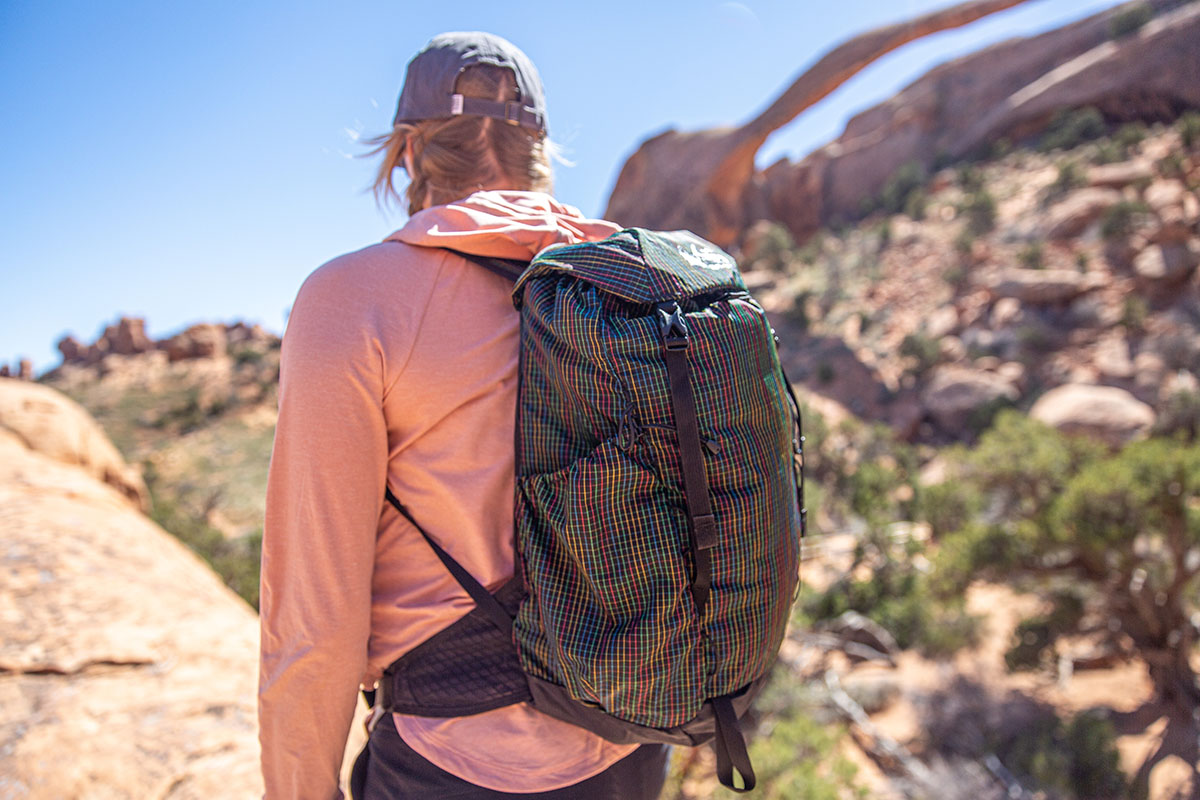
We tested the 22-liter version of the Flash for this review, and it’s also available in an 18-liter version, which weighs only 9.5 ounces and retails for $40. The Flash 18 drops a number of features from the 22’s build in order to save weight and bulk, including the airy padding on both the backpanel and shoulder straps, side dump pockets, and the top lip and pocket. As a result, it’s significantly less comfortable when loaded down and a poor ventilator. Like the 22, the 18 is one-size-fits-most, but its smaller overall shape seemed to work best with average to small statures. For backpackers, REI makes the Flash 55 for $199, which is an overnight pack that comes with a more robust suspension system and feature set, along with the more streamlined Flash Air 50 ($299) that’s more specialized and checks in under 2 pounds in all sizes.
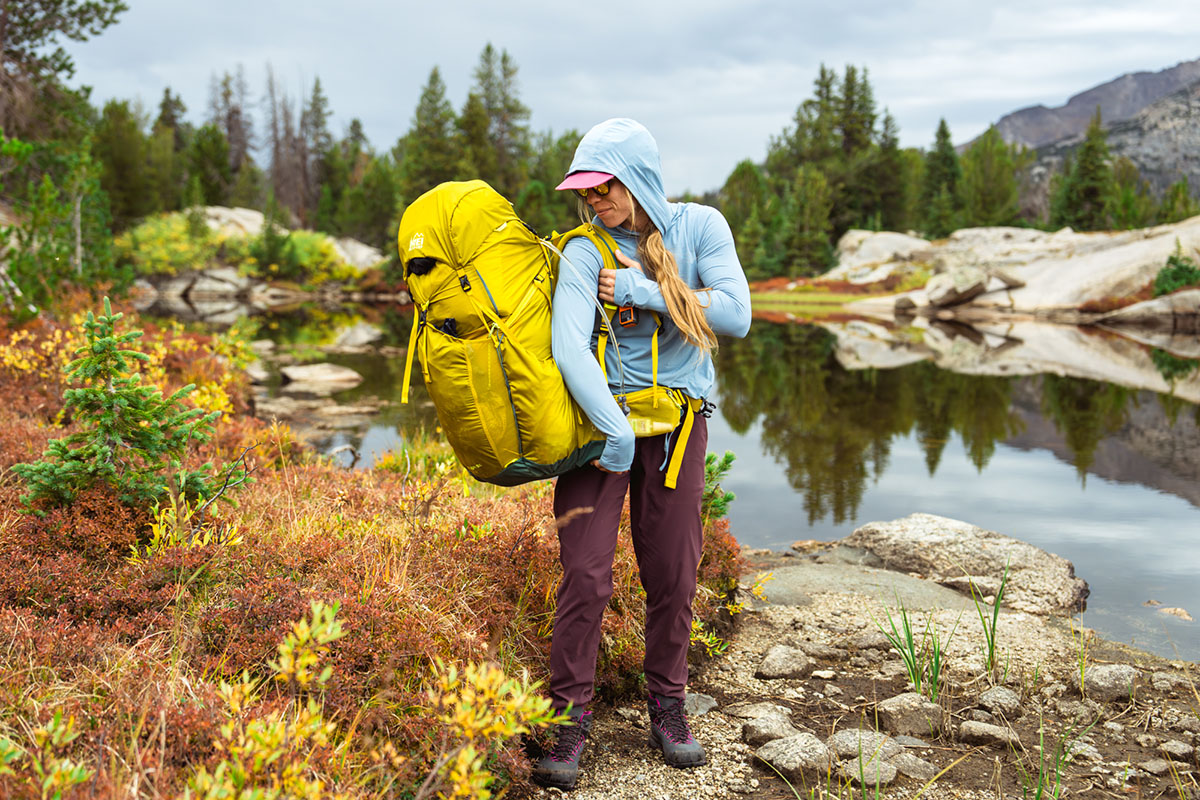
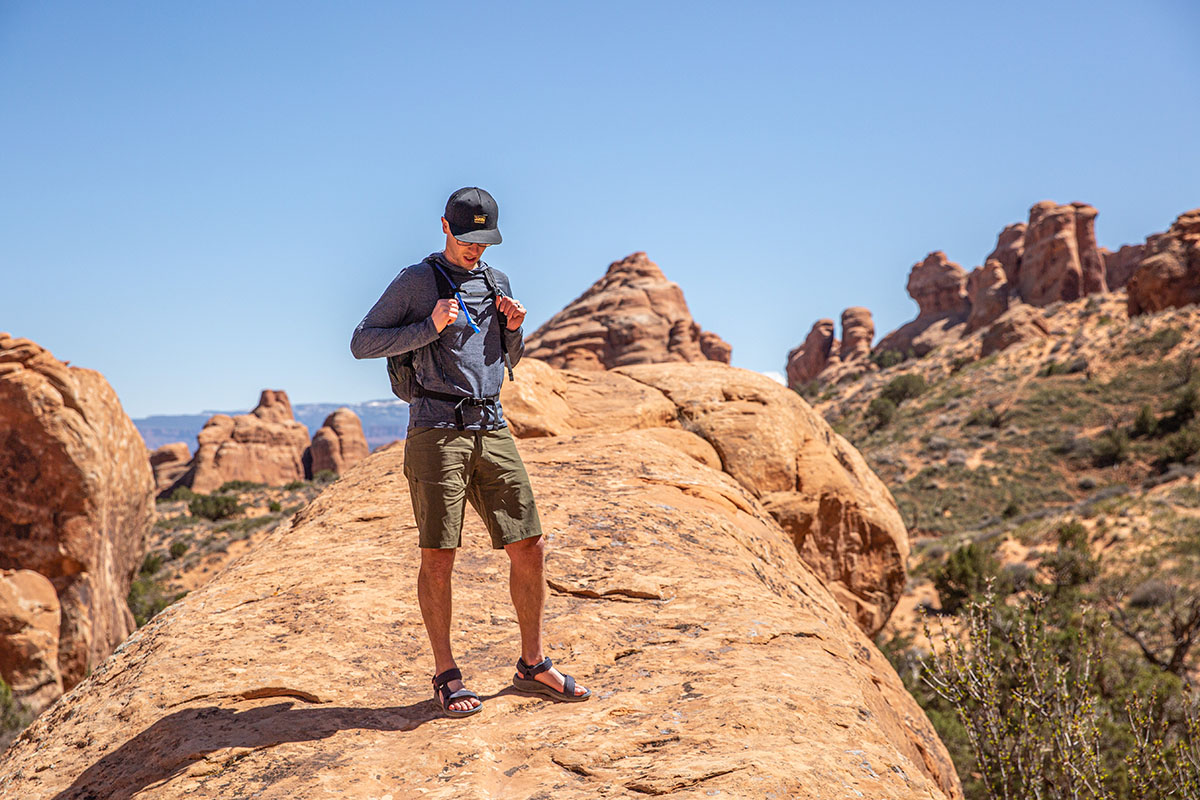
| Daypack | Price | Weight | Capacities | Hipbelt | Frame | Pockets |
|---|---|---|---|---|---|---|
| REI Co-op Flash 22 | $60 | 14.0 oz. | 18, 22L | Webbing | Backpanel | 3 exterior |
| Osprey Talon 22 | $160 | 2 lb. 6.1 oz. | 11, 22, 26, 33, 44L | Cushioned | Framesheet | 6 exterior |
| Cotopaxi Luzon 24L | $80 | 14.8 oz. | 18, 24L | Webbing | None | 4 exterior |
| Gregory Nano 22 H2O | $90 | 1 lb. 3.4 oz. | 18, 22L | Webbing | Backpanel | 3 exterior |
| Osprey Daylite Plus | $75 | 1 lb. 4.6 oz. | 13, 20L | Webbing | Backpanel | 5 exterior |
The REI Co-op Flash 22 is a versatile daypack that prioritizes a lightweight and packable build with only minor compromises, but the minimalism might be overkill for some. For more of an emphasis on comfort and durability, we love the Osprey Talon 22. At 2 pounds 6.1 ounces and $160, the Talon is over twice the weight and price of the Flash 22 but comes with advantages in most performance metrics. You get a sturdier framesheet and a real hipbelt (as opposed to simple webbing), meaning that the Talon distributes weight much more effectively than the Flash, and it also ventilates better between the body and the pack. Further, zippered pockets at each hip help keep you organized, as do integrated trekking pole and helmet carry systems. And importantly for some, the Talon features an adjustable torso length, making it easier to dial in a proper fit.
Within the same class as the Flash 22, the Cotopaxi Luzon 24L is a similarly lightweight pack (14.8 oz.) that’s well featured considering its minimalist intentions. However, it doesn’t include a spot to stash a hydration reservoir and features a more basic drawstring closure with no lid. Not only that, but the Flash 22 incorporates padded mesh along the backpanel and on the shoulder straps, while the Luzon is built with a simple nylon backpanel and thin mesh shoulder straps. This is a notable downgrade in terms of both comfort and ventilation, making the Flash 22 the no-brainer pick for us.

Gregory's Nano 22 H2O and Osprey's Daylite Plus (20L) are both very competitive options for lightweight daypacks with minimal trade-offs. The Nano is a particularly great value at just $90 for the pack and includes a 3-liter water reservoir (which costs $45 on its own). You also get noticeable boosts in support and breathability from the die-cut foam backpanel, as well as more durable fabrics and compression straps along the front for snugging down your load. Whether or not the added features are worth the bumps in cost and heft (1 lb. 3.4 oz.) are up to you, but we appreciate the Nano’s more well-appointed build.
Last but not least is Osprey's Daylite Plus, which again costs and weighs more than the Flash 22 but offers a number of advantages. Like the aforementioned Nano, the Daylite Plus uses more durable fabrics than the REI, has greater padding and ventilation on the suspension system, and boasts extras like a dedicated zip pocket for valuables and front dump pocket, which greatly improve organization. The Daylite is the heaviest of the grouping at 1 pound 4.6 ounces, although we like that it can be connected to many of Osprey’s larger-capacity backpacking and travel bags. All in all, if you’re on the lookout for comfort but don’t want to spend up for the Talon above, the Daylite is another solid option.
Back to the REI Flash 22 Review See Our Daypacks Guide